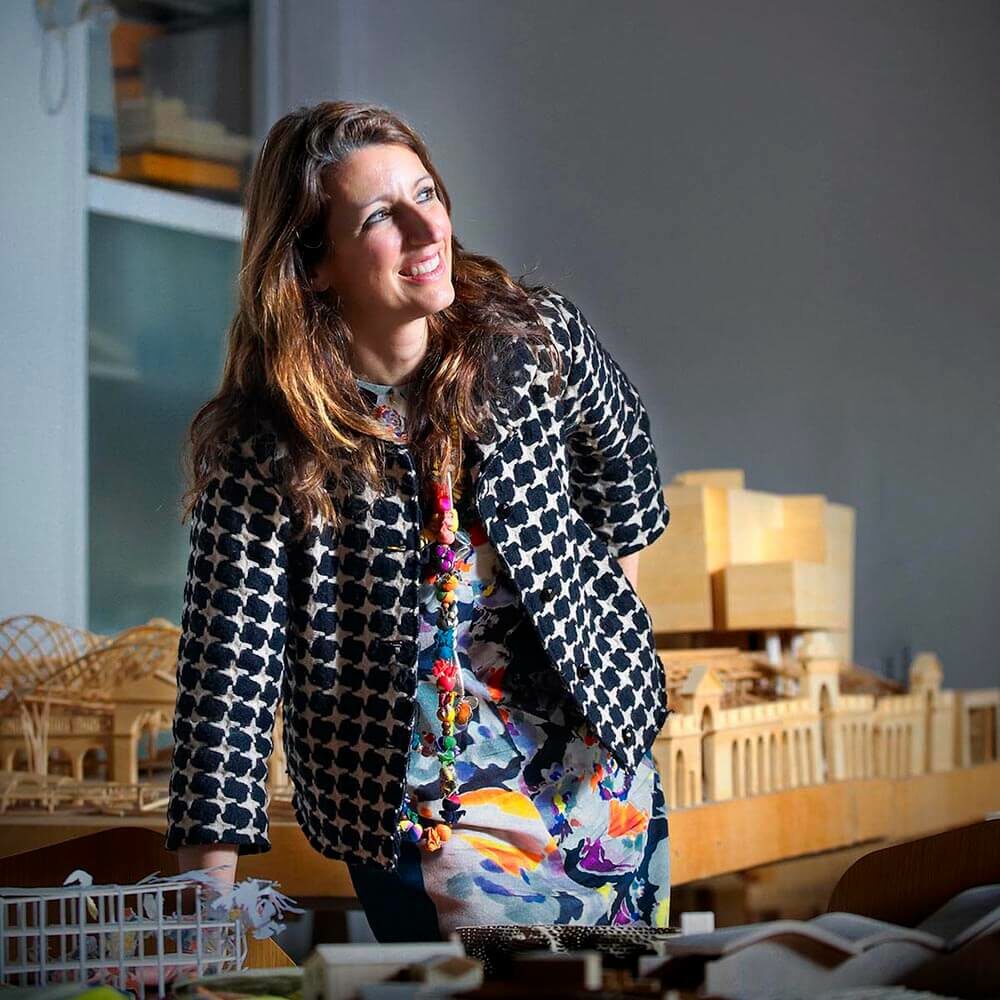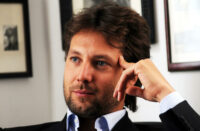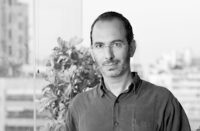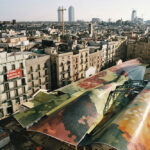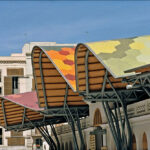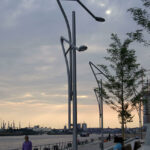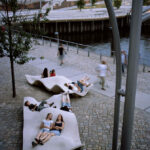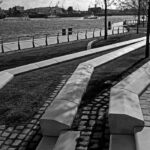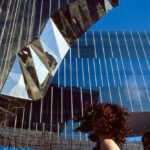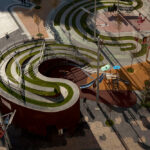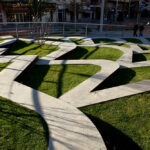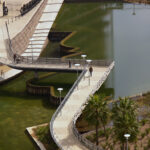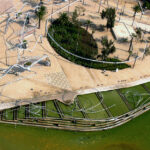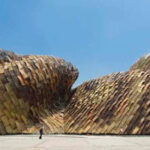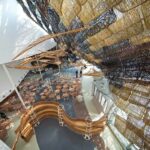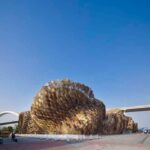ArchiTravel interviews the Director of Miralles Tagliabue EMBT, Benedetta Tagliabue.*
Interview by : Virginia Giagkou, Kiki Gkavogianni (video shooting) and Maria Anagnostou (video editing).
Virginia Giagkou: What is the importance of architectural tourism?
Benedetta Tagliabue: In a way, tourism is now kind of a new thing happening. I’m kind of surprised, for example, when I come back from a trip there is a big advertisement in Barcelona saying: “You will travel more” and to me is: “No, please, I don’t want to travel more”. Really, I travel at the maximum of my possibility because I have to and, sometimes, this idea of travelling is something very positive. Anyway, I don’t think that it is like this, but we are creating a kind of an idea like this, that travelling is always fantastic. Architecture, in a way, is for whoever needs it. But, nowadays, we have so many people going here or there. It’s very important that architecture is recognizable, familiar, making you feel happy. So, we are in a moment where there is a lot of translating ideas from one place to the other. And, also, there is more consciousness about making good quality architecture, because people find it in many different places. So, for example, public space is becoming more important, good quality is becoming more important, fantastic lights. I think tourism on architecture is more about us becoming conscious.
V.G.: What do you think is the added value that architecture creates within a city?
B.T.: I think that it is very important. For example, this idea of public space is so incredible. Now, I’m preparing a lecture for public spaces and I was thinking many times about the importance of the quality of public space. And, then, I realized that what I would like to say is so simple. Good quality architecture is making people happier. Bad quality architecture is making people not happy. It’s just as simple as that. To learn how to make good quality architecture needs a lot of effort but, mainly, the idea is this. And, mainly, when you make a project you should be very conscious about this, about making something that will make people feel happier in that place.
V.G.: What is the importance of architectural events worldwide? What are the profits for a city holding such kind of major events?
B.T.: The WAF, the World Architecture Festival that I’m experimenting since its beginning which was three years ago, is a very good event. It’s like a magazine, but alive. That means that you have the possibility to meet together in many different ways of conducting a practice, to practically meet with people and to have a cultural exchange which is very strong and really worldwide, as the name says (world). I appreciate this very much and I think that it should involve the city which is hosting it a little more. It’s not easy, I know that the organizers are really trying to do that but, Barcelona is not totally conscious that this is taking place here, in this city and for some precise reasons. This is now getting better. I hope, in the future, this will also involve more the cultural life of the city of Barcelona.
V.G.: You own the architectural office “Miralles Tagliabue EMBT “, that works with several projects, trying to conserve the spirit of the Spanish and Italian artisan architectural studio tradition which espouses collaboration rather than specialization.
As an architect, what is the object that you have, what do you want to succeed most?
B.T.: We are involved in many different types of projects. We don’t like to say that we have a specialization, that we do public spaces for example. We do what is the Spanish tradition of architects; we are involved in whatever is needed. We can do parks, open spaces, buildings, high rises, small budget buildings, schools, theaters… We have been doing a lot of different things. In a way, the architects are this: trying to make a place better. This is our label. Not so much “specialized in this or that”.
V.G.: Spain is a country with great history. Designing a modern building within this context is a complex procedure. Is critical regionalism an approach to your architecture?
B.T.: I don’t know because defining it is kind of more difficult. Spain has a very different moment for respect on how to consider historical wealth. It is very different from Italy. Here, because we were (especially some years ago) in a moment of great dynamism there was a kind of “Ok, we can work with it, we can change it, we can transform it”. Now, it’s becoming a little more afraid. It is taking a little more distance from the historical architecture. This is a pity, because it is very nice to think that everything that is remaining which is historical is useful only if it is able to be alive. If it’s not able to be alive, it‘s never unique.
V.G.: How would you characterize modern Spanish architecture?
B.T.: It’s a good place. Before, I told you that this Spanish way of making architecture is about trying to make a good place anyway. You can be an architect involved in urbanism, in public space, in small housing projects, everything, furniture also. This is a fantastic way of being. Spain has a good tradition in this. It has good, small studios that are very conscious of the capacity of their colleagues or the colleagues of the past. It’s a little like Finland which is not a big place, but it’s a place where the architectural capacity is a tradition.
V.G.: Is the world financial crisis an opportunity for everyone to reconsider the ways that we design and construct the buildings and the urban environment?
B.T.: Of course, if you want to be positive you always say “It’s a co-opportunity”. In fact, it is a disaster. What can we do? We always have to reinvent ourselves and see what is really needed. If we are not needed anymore, we just have to understand it and try to enter into reality. But an architect, as a person who is trying to make a place better, is always needed. It’s like a general doctor. In a world of specialization, a general doctor is very needed. We are very needed.
V.G.: In recent years attention turns to green urban regeneration. Do you think that it is imperative for the city or is it just a new fashion with economic outcomes and covertly interests?
B.T.: Urban green regeneration is fantastic. It implies many different things. It’s about understanding what a city needs to really function in the best way. It’s a main theme and it was always, in a way, because good architecture, good urbanism was always about making things function better. But, now, everybody is very conscious and there is this theme of energy, this new possibility of having alternative energies, this consciousness about how important public space is, how the city should be, which density is the best to make it work, to make the public transportation work. This is a very fundamental theme that we always have to keep in mind.
V.G.: At the end, can you please provide your personal proposal for 10 buildings which you think as the most important worldwide that someone must visit anyway?
B.T.: This is very subjective. When I met Enric Miralles, we had some kind of heroes. It was very beautiful to have this discovery of Le Corbusier or the secret Le Corbusier. Anytime we were traveling, we were kind of discovering new heroes or local heroes, people that you were not very interested in and then you start to understand. What is very important is to have your eyes open and to be open and understand everything you find in front of you.
* This interview was taken on November, 2010.
Featured Image © Vicens Gimenez
More on : Benedetta Tagliabue
About these Authors : Virginia Giagkou, Kiki Gkavogianni, Maria Anagnostou
Work of Benedetta Tagliabue

